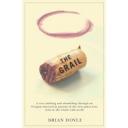When last I wrote I was preparing for a weekend trip to the Oregon Coast with my oldest daughter’s book club. We started this tradition of spending weekends away three years ago, and the trips keep getting better every year.
There are twelve of us, so it can be a challenge finding a place to stay, but it’s worth the effort. This year we reveled in a sunny, warm Saturday at the coast, not always a given in Oregon. The nice thing about our retreat is that we get to spend time with the whole group as well as one on one with other members.
Some of the fun to be had this weekend:
- Walking on the beach
- Building sand castles and playing in the surf
- Yakking in the hot tub
- Watching Chocolat
- Playing pool, ping pong, scrabble and rummy
- Hanging out, eating good food and talking
Oh, and there was solitary time to read or nap or sunbathe for whoever wanted it, too. Somebody made the comment that this year one of our major topics of discussion was the girls’ having driver’s permits and learning how to drive. Next year we expect to talk about their plans for college. Every year it seems to be a different right of passage.
Here’s a picture of our group sitting down for Saturday night dinner.
Do you have a favorite mother daughter book club actvity? Send in your comments and let us know.









